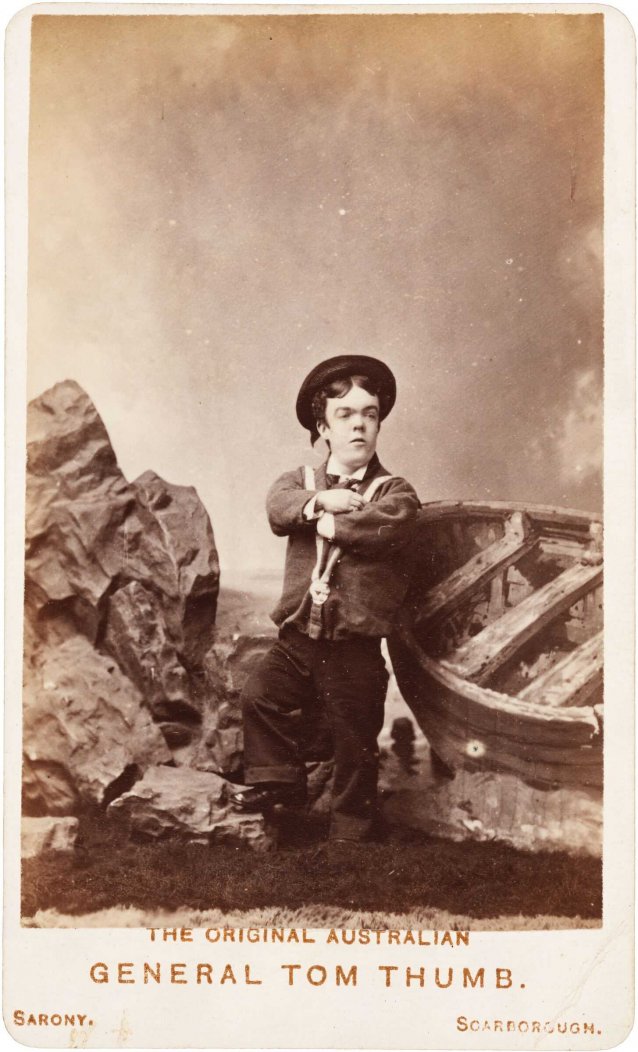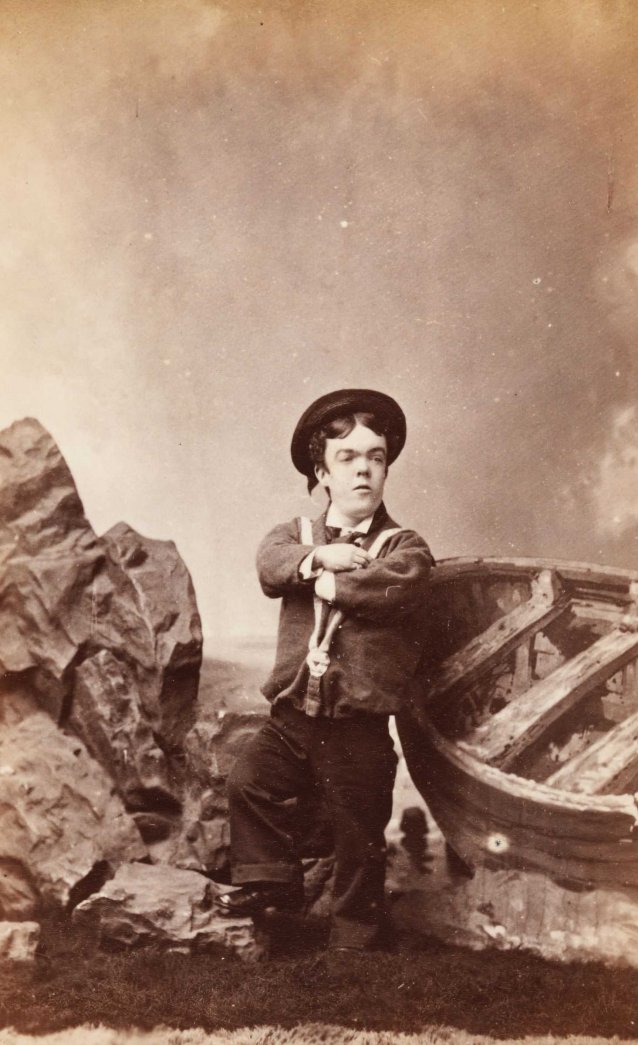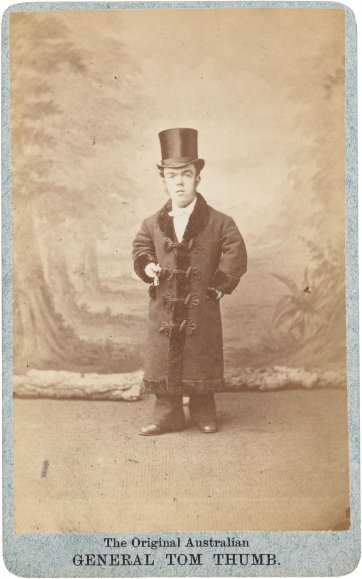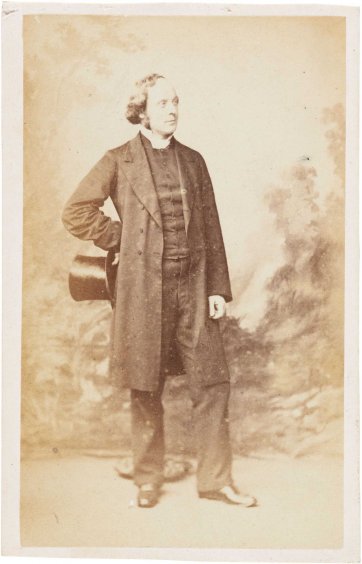John David Armstrong (1857–1943) was a sideshow and vaudeville performer known as ‘The Australian Tom Thumb’. Born in inner-suburban Melbourne, he made his stage debut at the ‘Prahran Popular Entertainments’, aged fourteen, in August 1870, the same month in which the ‘Original General Tom Thumb’ – the American Charles Sherwood Stratton (1838–1883), who achieved international fame as a member of PT Barnum’s touring sideshow troupe – was also appearing in Melbourne. With his ‘Lilliputian dimensions’ of 34 inches high and billed as ‘one of the greatest wonders of the age’, Armstrong immediately became the subject of carte de visite photographs, which were sold to patrons attending his performances. In 1871, he was exhibited alongside Chang the Chinese Giant and Chang’s wife, Kin Foo, in Melbourne, Bendigo, Geelong and other towns; and in 1879, having made numerous other appearances, he embarked on an overseas tour that encompassed the UK, South Africa and the USA. Following his return to Australia, Armstrong went back to the local circuit, appearing on the program at George Selth Coppin’s theatre in Melbourne and on those of various other venues and events. Typically florid contemporary reviews of Armstrong’s performances describe his being ‘received with yells of delight’ and his causing ‘a diversion of wonderment on all sides’ with his comic songs. He retired from the stage around 1910. He claimed he was the world’s shortest Freemason, and later in life often related the story of the encounter with Queen Victoria that occurred when, driving through Windsor, his tiny goat-drawn carriage frightened the horses harnessed to Her Majesty’s coach. Rather than being affronted, the Queen ‘greeted Armstrong with a smile and sent her coachman across with a message for him to pass on’. Armstrong never married. He died in Melbourne at the age of 86 in August 1943.
Collection: National Portrait Gallery
Purchased 2014
The National Portrait Gallery respects the artistic and intellectual property rights of others. Works of art from the collection are reproduced as per the
Australian Copyright Act 1968 (Cth). The use of images of works from the collection may be restricted under the Act. Requests for a reproduction of a work of art can be made through a
Reproduction request. For further information please contact
NPG Copyright.



















